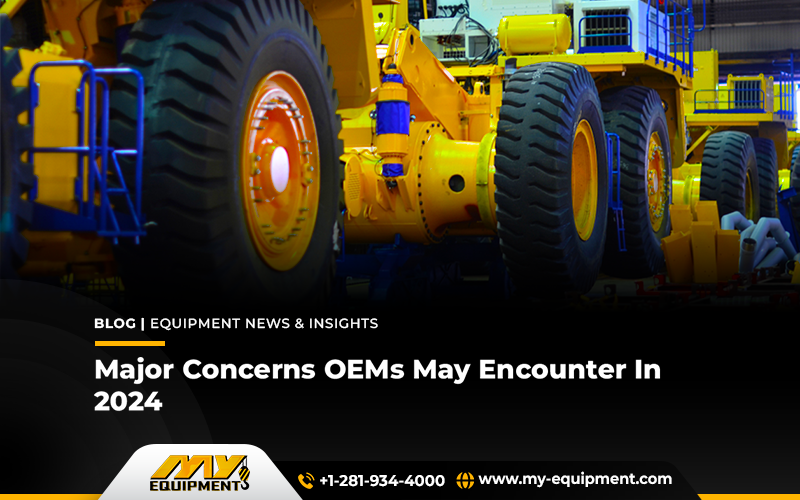With the start of 2024, many construction companies are proceeding forward with new plans to excel and shine. However, paving the right path requires time, effort, and a smart approach. Industries plan to overcome external and internal obstacles even if the ones that hit the productivity like an underdog.
However to overcome the obstacles we need to identify them first. Here are three main obstacles that U.S. heavy equipment suppliers and manufacturers need to focus on;
Acknowledging Internal Labor Shortage
Recently the construction industry has been burdened with labor shortages rather than supply chains. For each worker, there are 1.5 jobs which has increased the average wage rate by 4.5% in the U.S. over the past five months.
However, due to the lessened population, the heavy construction equipment sector is facing a labor shortage as the 55 years old laborers are retiring.
Post COVID, the manufacturing industry is facing labor shortage along with global inflationary pressure.
Therefore, attracting new talents has become an emerging challenge for the construction manufacturing sector.
Solution:
With the integration of AI and smart innovation, manufacturers can upgrade the development system.
Through automation, repetitive tasks like digging, excavation, and grading can be managed at a faster pace.
This will need the adoption of an innovative employee recruiting approach. Some companies are shifting towards 36-hour weekend shifts with 4 days/week.
Abrupt Market Volatility
the Chips and Science Act, the Infrastructure and Job Act, and the Inflation Reduction Act, all these acts work to bolster the U.S. construction market. These acts are paying hundreds and thousands of dollars to boost the infrastructure and other construction projects.
Unfortunately, the U.S. construction industry observed a 3% contraction despite all the aid as per the global data at the AEM webinar. Increased interest rates and fewer residential projects are the two main reasons behind this contraction.
However, there is a huge pipeline before the financial aid by these acts reaches the main contractor which creates delays.
Moreover, predictions indicate that supply chain shortages, material and fuel price expenses, and labor costs will reach higher heights in 2024.
Especially, after the Middle East crisis, the construction sector may face crude oil shortages or higher prices too. The increased interest rates may put a hold on heavy construction equipment purchases.
What’s Ahead?
According to the American Rental Association, contractors will shift toward renting machinery rather than buying. Around 50% of U.S. contractors are hustling between buying heavy machinery.
However, we suggest if you need a machine for a longer duration buy used construction equipment.
If you want a reliable heavy equipment supplier then consider visiting MY-Equipment.com, here you can find renowned brands’ machinery at reasonable rates.
External Labor Issues
Construction company owners feel the deficiency of skilled labor. It is also serving as a major obstacle for contractors to invest in the latest machinery. Due to a shortage of skilled labor, it is obvious that they can’t properly utilize smart heavy equipment.
Moreover, the old employees are outdated in terms of learning new mechanisms by the time their retirement gets near.
Solution:
It allows heavy equipment suppliers to make contractors aware of automated machinery.
Moreover, contractors need to allocate separate budgets for training employees to use new technologies and adopting smart ways to achieve increased productivity rates.
The Future Ahead
The growing demand for construction projects has given birth to smart heavy equipment equipped with advanced and human-friendly algorithms. It offers two main benefits reduction of labor size and completion of tasks at a relatively higher speed with more accuracy.
But as a wise saying every challenge comes with an opportunity. Simplified control systems, semi-automated operations, and remote controlling algorithms are the main armors to win the battle against rising internal and external construction challenges in 2024.


 1400 Broadfield Blvd, Houston, TX 77084,
USA.
1400 Broadfield Blvd, Houston, TX 77084,
USA.